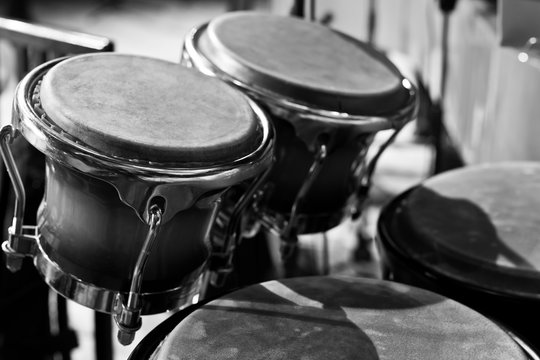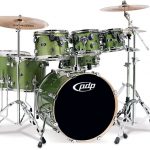The drum is a percussion instrument that has been used for thousands of years. Many different drums are available today, which come in various sizes, shapes, sounds, and prices. If you are interested in learning how to play drums, you must first decide which type of drum you want to use.
You must be interested in learning drums and probably wondering what type of drummer you should be to play the best music.
The answer is simple – there is an enormous and intriguing exhaustive list of drums and percussion you can explore to become the best drummer.
If you can get your hands on a real drum set, the best way to learn is to start with an easy one.
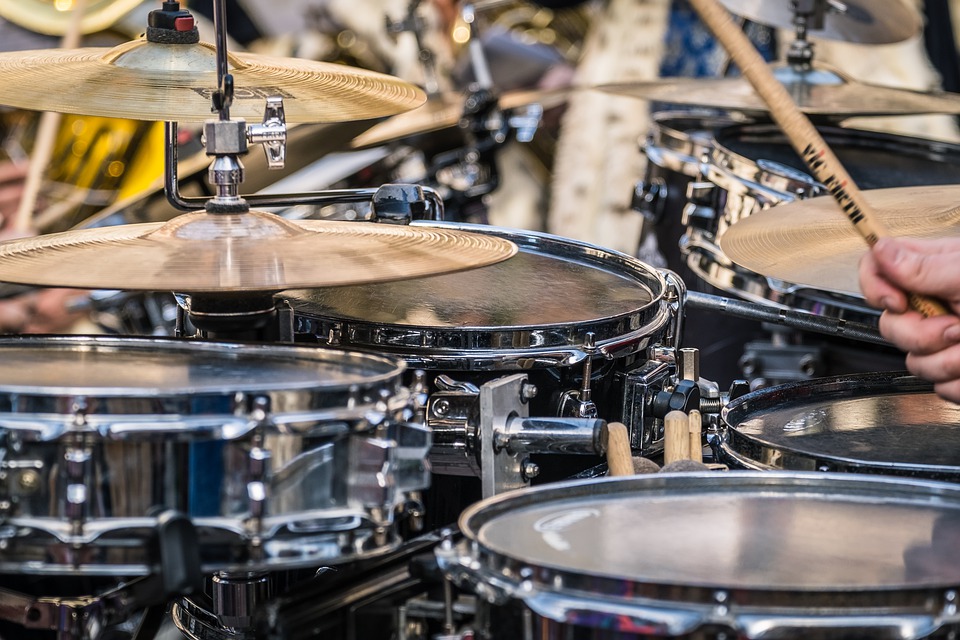
You can play the drum kit with someone that can help you figure out what each part does and how to use it properly. You don’t have to be able to read music to do this. All you need is a basic understanding of rhythm. This article focuses on different types of drums to capture your interest in the drumming adventure.
different types of drums and Drum Sets
The most common types of drum sets are:
- Acoustic Drum Sets
- Electronic Drum Sets
- Hybrid Drums
1. Acoustic Drum Sets
You are probably familiar with the acoustic drum set since your childhood. There are many variations of this type of drum set in terms of configuration and size. Acoustic drum sets produce dynamic sounds with great nuance and variation because they employ metal cymbals and drum heads.
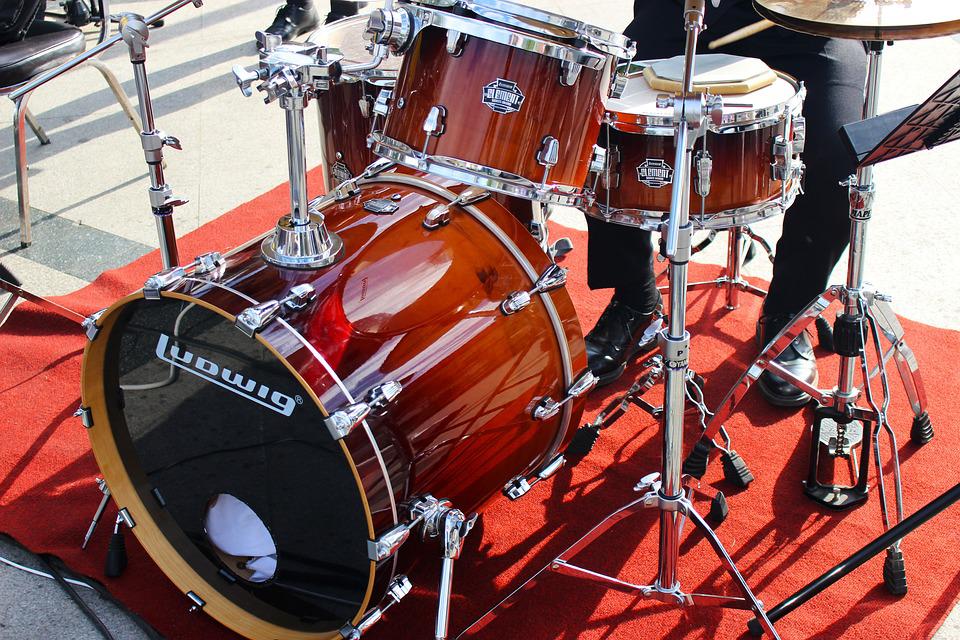
The different types of drums you can find in this drum set include:
Bass Drum – Where the percussionist can operate a bass drum with a kick pedal or beater.
Floor Tom: In terms of size, the floor tom is the second-largest drum in an acoustic set, only surpassed by a bass drum. A floor tom is best if you want a deep, low-pitched booming sound.
Rack Tom: A rack tom has a defined tone and an open resonating sound.
Snare Drums: The drummer usually places the snare drum at the centre to provide a distinctive loud cracking sound when struck. You can add several types of snare drums to establish different styles of music.
2. Electronic Drum Sets
Electronic drums are the best option if you want a much quieter and more compact drum set that features noise constraints. You can bring out as many different sounds as possible using your electronic drum set. Electronic drums provide synthetic sounds that you can sample from the existing acoustic drums. You can also establish them from scratch while using your computer.
Electronic drum sets have a wider range of sounds than acoustic ones. However, in terms of offering depth of sound, acoustic drums surpass electronic drums. Electronic drum kits are the most common forms of electronic drums. Many drummers use electronic drum kits as their primary setup choices because they can be technologically improvised over time.
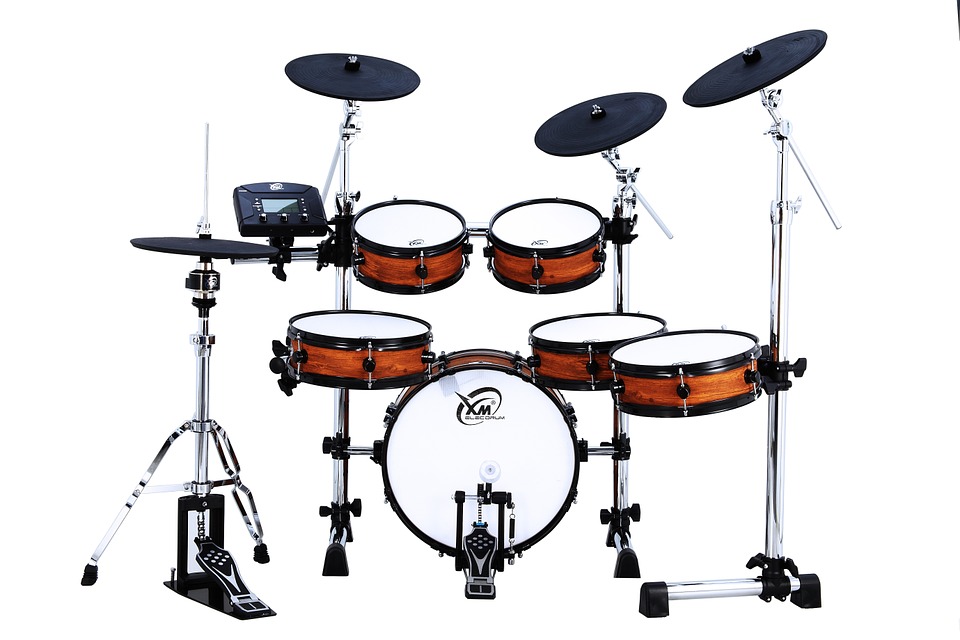
Here are the constituents you can find in an electronic drum set:
Drum Module – The drum module provides the sounds.
Hardware – The hardware positions everything together.
Cymbal Pads: They make your electric drumkit bigger according to your playing style and taste.
Pedals – Produces sounds for bass drums and hi-hat. Pedals may also consist of a kick drum pad.
3. Hybrid Drums and Drum Sets
When a drummer combines acoustic drums and electronic drums, they develop hybrid drumming. Most drummers prefer hybrid drumming because it allows them to set something that can meet their needs, including drum triggers and drum pads.
If you are a drummer who loves to create soul-gratifying art, look no further than the hybrid setup.
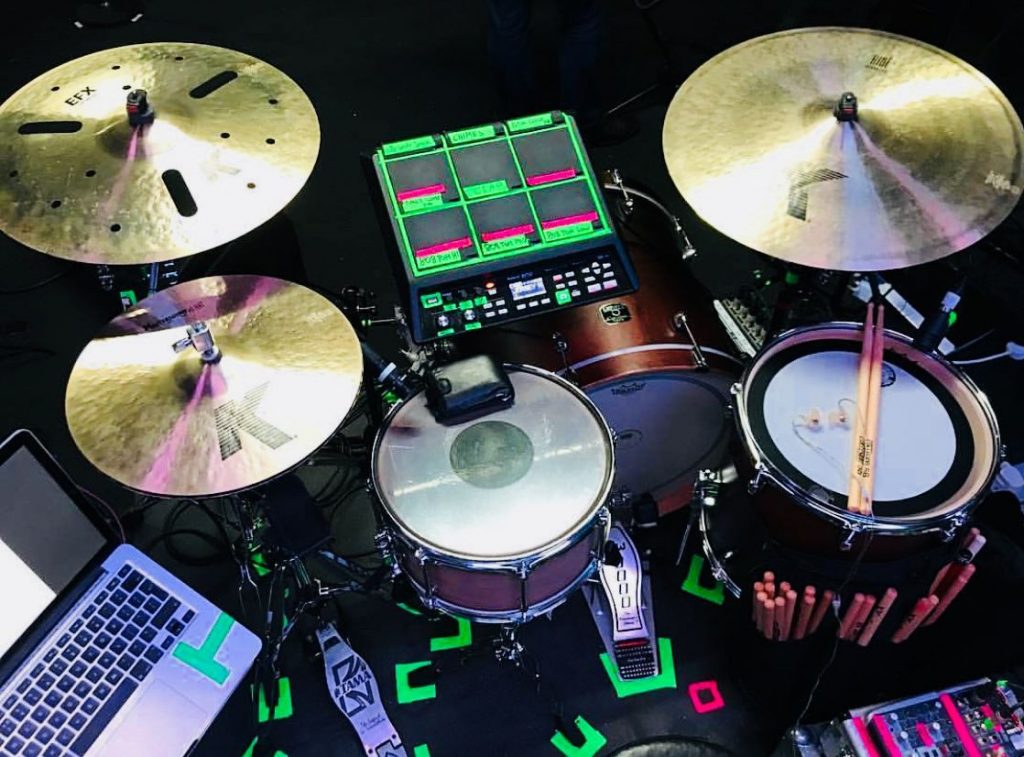
Hybrid drums are used in contemporary music, particularly in the pop setting. However, the advantages of hybrid drumming can spread across all genres of music. Hybrid drumming offers endless possibilities, including improved sound quality, more drum sounds, and higher production values for your performance.
Below are percussion instruments you can find on a hybrid drum:
- Acoustic drums
- Drum triggers
- Electronic drums
- Drum trigger module
- Electronic sample and percussion pads
- Hybrid cymbals
Types of Hand Drums
If you are looking for the best types of Hand Drums, below you will find the selection Zero to Drum did for you:
- Tabla Hand Drums
- Bongos Hand Drums
- Congas Hand Drums
- Cajon Hand Drums
- Doumbek Drums
- Hang Drums
Tabla Hand Drums
Tabla hand drums come in pairs, the Dayan and Bayan. The pair originated 500 years ago from the Indian subcontinent. The Bayan (male drum), made of clay or copper, produces a bass tone. On the other hand, a Dayan (female drum) made of wood produces a tenor tone.
In Bengali, drummers refer to Bayan as the left and Dayan as the right drum. When playing these drums, you must use a dominant hand on the Dayan drum and a non-dominant hand on the Bayan drum.
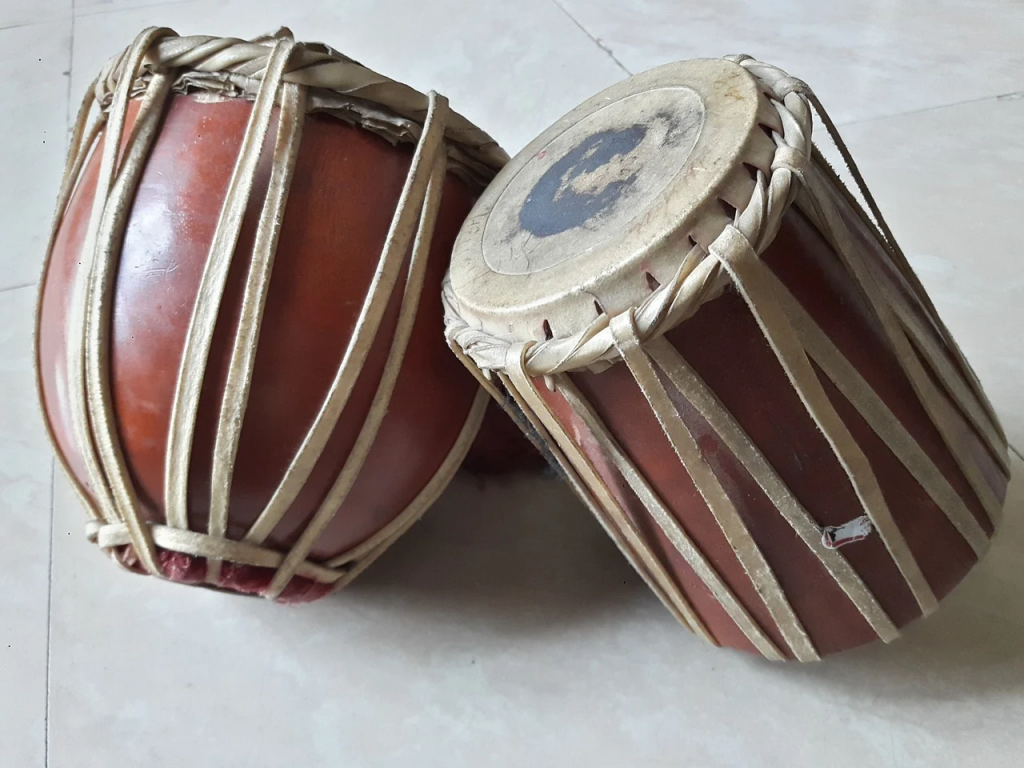
Tabla hand drums are very popular in gaining traction with other music styles. They are also very versatile because they can produce almost 30 different tones.
When playing tabla drums, the drummer sits with their legs crossed, using their fingers and palms to hit the drum’s skin.
Before you start playing tabla drums, you should add some powder to your hands to absorb the moisture on them. If you are a pro, you can use different techniques to bring out different sounds.
Bongos Hand Drums
Bongo drums are one of the percussion instruments from the Latin family, along with the congas and timbales. They are very popular in the Caribbean, Cuban, South American, and Puerto Rican percussion music.
There are many options of bongos to choose from if you are a hand percussionist beginner. However, wood bongos made from Siam oak are specifically for professional players. Natural wood bongos are best known for their deeper sound and natural finish.
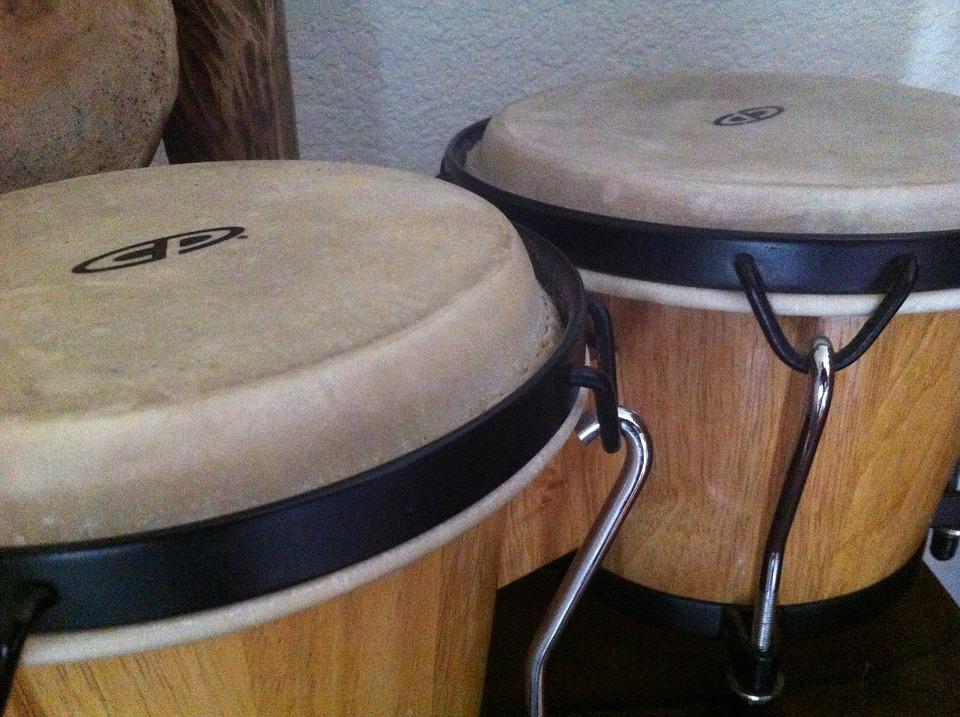
The bongo drum set comprises the largest drum, known as the hembra, while the smallest is the macho.
You will usually see bongo drums appearing with a section of other typical Afro-Cuban rhythm sets, including the Cajon, conga drums, cowbell, clave, timbales, and tambourines.
You must strike the drum heads using your fingers rather than palms when playing bongo types of drums.
You can switch between the hembra and macho to create different accents and patterns. You also need to alter your finger placement, which helps create various accents.
Congas Hand Drums
Conga hand drums are one of the percussion instruments with a rich history in Latin music. To play the conga drums, you need proper technique and daily practice.
Conga hand drums can be featured in countless popular genres, including folk, funk, pop, jazz, rock, soul, and reggae.
Conga drums exist in the Quinto, Tumba, and tres dos. Quintos is small with the highest pitch, Tumbas is large with the lowest pitch, and tres dos is the middle drum (conga).
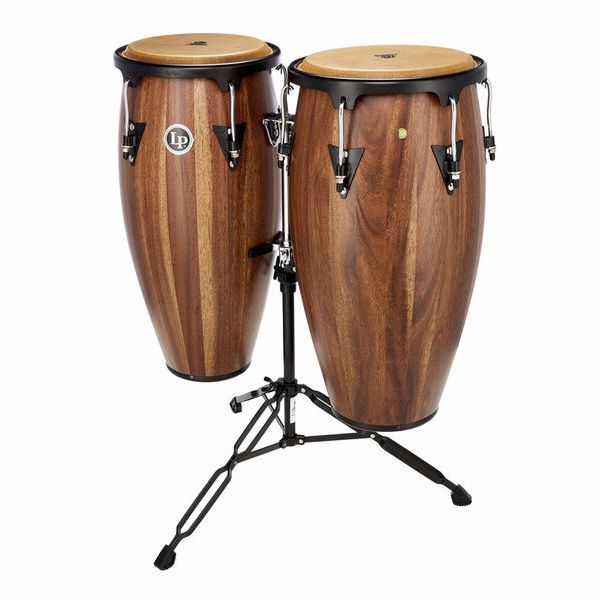
There are several techniques you can use to play the conga types of drums, such as:
- Slap – You should strike the drum’s centre using your fingertips’ flats. Maintain your hand in a cupped position to create extra resonance.
- Bass – You should strike near the drum’s center using your full palm.
- Muted – You need to have an open strike leaving your fingers to muffle the sound on the drum.
- Open – You need to strike near the drum’s rim using the base where the fingers meet the palm, then let your hand bounce back up.
- Heel-Toe – Using the heel of your palm, strike the drum toward its centre while following your fingertips.
Cajon Hand Drums
Cajon hand drums are percussion instruments from Peru that resemble a box-like shape where the drummer sits while playing it.
You can achieve incredible rhythmic tones depending on how you hit the Cajon. The Cajon features a circular hole on one of the sides where it emits sounds. If you are an enthusiast of Flamenco music, Cajons instruments are for you.
They are also prominent in various music genres, including jazz, rock, pop, folk, and many more.
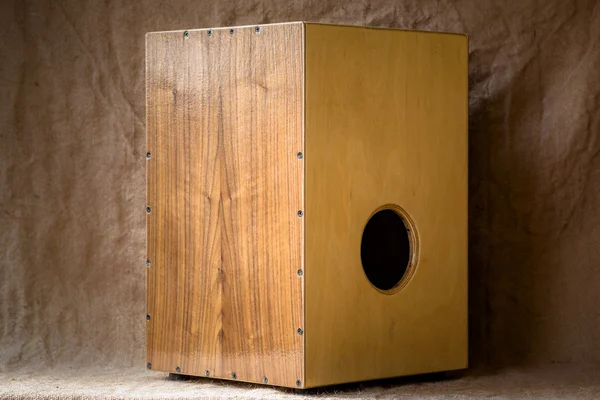
Make sure you are comfortably settled before playing Cajon drums so that you will not injure yourself. Most drummers sit on top of it, reaching the front to play it, while some sit behind it on a chair while they perform.
Maintain your posture while performing for health and safety reasons. You can take some time to understand various tones while playing the Cajon, as it is open to creating dynamics and different rhythms.
Doumbek Drums
Doumbek is one of the oldest percussion instruments used in the Crimean Tatars, Balkans, and the Middle East. It has similar features to the darbuka drum but differs in rhythmic tone.
Most Europeans still play the Doumbek drum despite selling a few musical instruments. They also greatly contributed to the Ottoman palaces and other big concerts. Some Arab countries still recognize these instruments due to their great recognition in the Middle East during the middle ages.
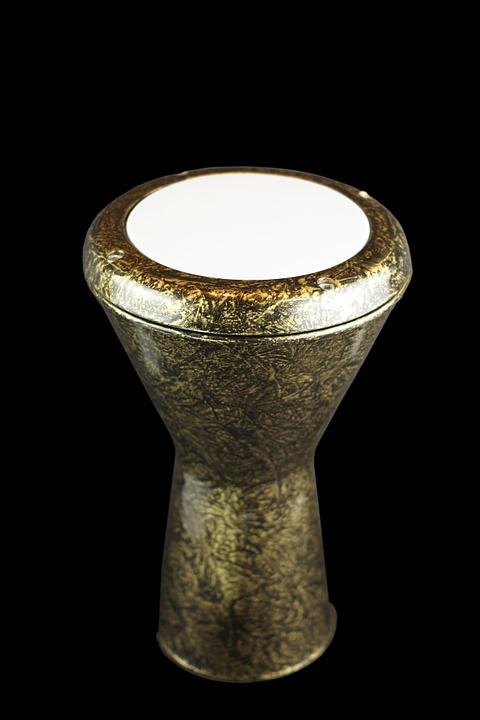
You must strike using your hands or drumsticks when playing these percussion instruments. Doumbeks are easy and simple to play, but learning to play takes some time.
You can create three basic sounds while playing these drums: Ka Doum and Tek. You can use one or two fingers to produce the Tek sound, four fingers for the Doum, and the Ka sound; you need to use the opposite hand while hitting the Doumbek drum’s shell.
Hang Drums
The other name for a hang drum is the hand pan. Felix Rohner and Sabina Scharer invented the hung drum in 2000 while in Bern, Switzerland.
The main reason why these musical instruments are popular is that they produce captivating sound patterns. Another reason is that playing a hand pan is easy and simple; you don’t have to be a professional to learn this.
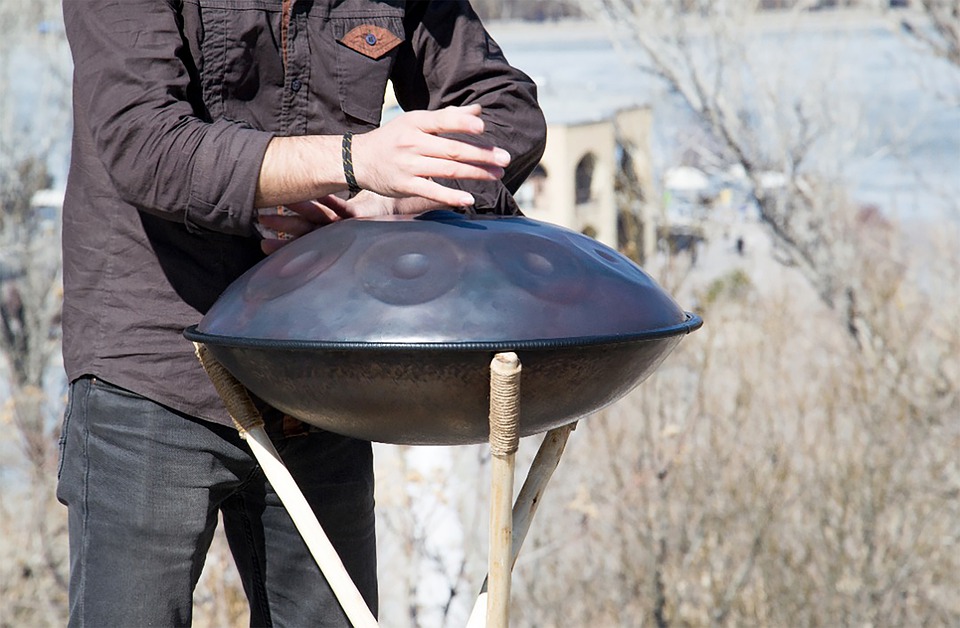
You need to learn the keys and modes to get the basic rhythm. Once you understand how to strike this drum playing the actual notes and tones is an absolute breeze. However, a hand pan drum is an expensive instrument that a drummer might find difficult to own.
Hung drums are made from two hemispherical steel shells glued together. You will find tone fields on the top side to strike your fingers to produce particular tones. The sounds produced are nearly ethereal and originate from the dents on the shell. There is no right or wrong way when playing a note on a hand pan. Don’t play it too hard, but gently strike the tone field with your fingers.
Types of African Drums
The most famous African types of drums are:
- Djembe African Drum
- Talking Drum
- Ngoma Drum
- Udu African Drum
Djembe African Drum
Djembe is a type of drum that is very popular in Africa, especially in West Africa. Looking back in history, djembe drums came from the Mali Empire. The people from Mali Empire used these types of drums as a communication tool. When making djembes, drummers cover these rope-turned drums with animal skin on their surface like goatskin. Drummers get a deep tone (bass sound) when they hit at the center of the drum.
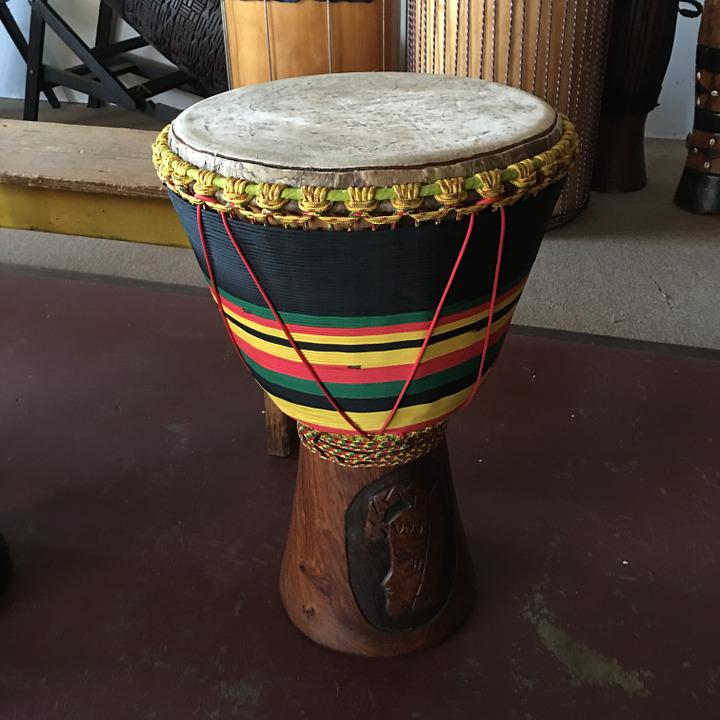
However, if you want to get an attacking tone similar to a marching snare drum rimshot, you can hit the edge part. If you are a professional drummer, there are a lot of sounds you can get from djembe drums.
You can play djembe drums by holding them between your legs while standing or sitting. You will notice that drummers frequently use djembes in drum-like circle performances, especially in traditional African music.
Talking Drum
Look no further than a talking drum if you are looking for a drum that mimics the human speech sound concerning accent and tone.
You can find talking drums in Melanesia, West & East Africa, and Southeast Asia. Talking drums have a variety of names, including Bagel, Dan Karbi, Doodo, Gangan, Igba, Odondo, Tamanin, Lunna, and Tamma. The talking drum has leather cords for tension, and the common drum skin used to make it is goatskin.
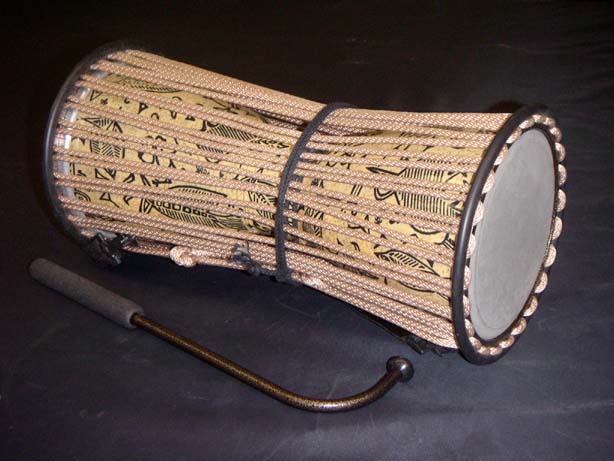
These hourglass-shaped drums came from West Africa and featured two drum heads linked by leather tension cords. The function of a drum head is to allow the drummer to modify the drum’s pitch.
You can change the pitch by compressing the cords between your body and arm. Most traditional African cultures used talking drums to convey messages over long distances until the arrival of Europeans in the 18th century.
Drummers still use talking drums in modern music, including the Grateful Dead, Fleetwood Mac, Tom Waits, Erykah Badu, and Nana Vasconcelos.
Ngoma Drum
The Ngoma is an East African version of the African drum popular among the Bantu population to signify social occasions, rhythms, and specific dances. Cultural artisans can handcraft these musical instruments using wood and cover both ends with cow or goatskin.
There are various Ngomas for different occasions, such as weddings, burials, worship, circumcision, and drama festivals. Ngoma emerged from East African countries such as Kenya, Zimbabwe, Tanzania, Rwanda, and Uganda, especially from the Baganda tribe.
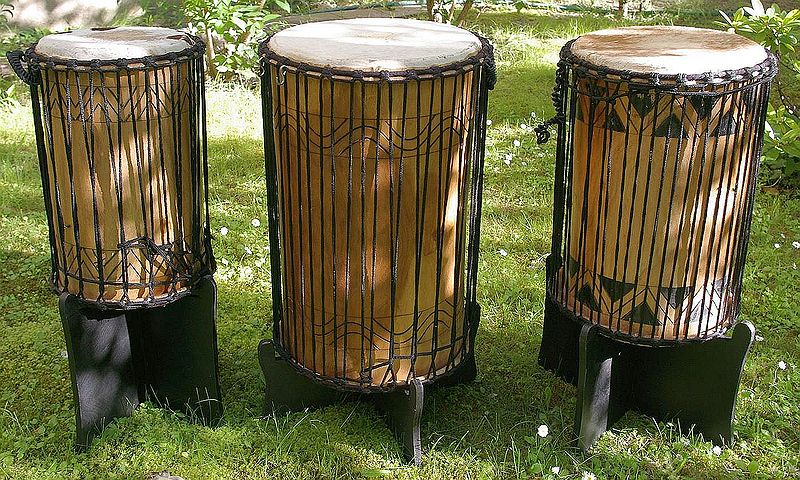
Drummers from Central and South Africa use Ngoma during healing ceremonies to reduce stress and social support to unify the tribes.
On most occasions, drummers use Ngoma to honour their ancestry through the dynamic presentation of drum pieces that educate, empower, and embrace African Heritage.
Ngoma appears in various shapes and sizes, where the largest one is Bakisimba while the smaller one is Nankasa. The Bakisimba produces deep or bass tones, while the Nankasa produces a high-pitched sound.
Udu African Drum
Udu is a drum from the Igbo people of Nigeria made entirely of clay (terracotta) with an additional goat skin facade on one end. It has a narrow-like neck and vase-like shape with a circular opening at the top and on the sides.
The playing technique for the Udu drum varies from one region to another and one drummer to another. If you are looking for a drum with bass beats and vibrating tones, look no further than Udu.
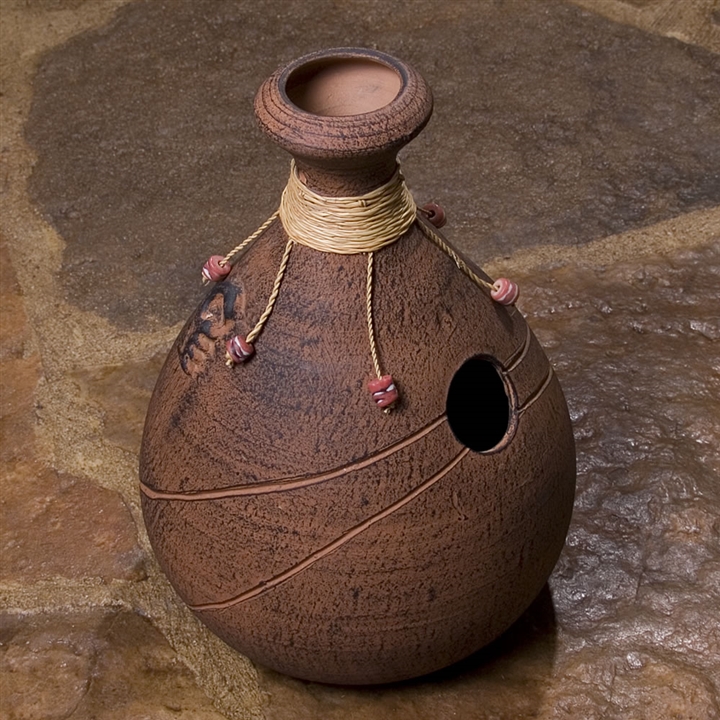
Igbo people use the drum as an idiophone and partly aerophone as it incorporates basic drumming techniques on the side hole. At the same time, you can selectively open and close the top hole to modulate the air chamber resonance with the other hand.
The sound produced is a deep bass sound articulated by profound and bright percussion, especially when you hit a big hole. However, the Udu drum features a unique property that enables you to produce various sounds while playing it.
Types of Frame Drums
If you are looking for the most famous types of Frame Drums, here we are:
- Pandeiro Drum
- Tambourine Drums
- Bodhran Drums
- Goblet Drums
Pandeiro Drum
The Pandeiro is a tambourine-style frame drum that is popular in Brazil. It is an incredible musical instrument with a rich history in the Arabic regions. Traditionally you can hold the Pandeiro in your left hand with its head facing up.
You can play various rhythms, especially the bass sound available through its tuneable head. Drummers can play the typical pandeiro drum patterns by alternating their hands’ thumb, heel, fingertips, and palm.
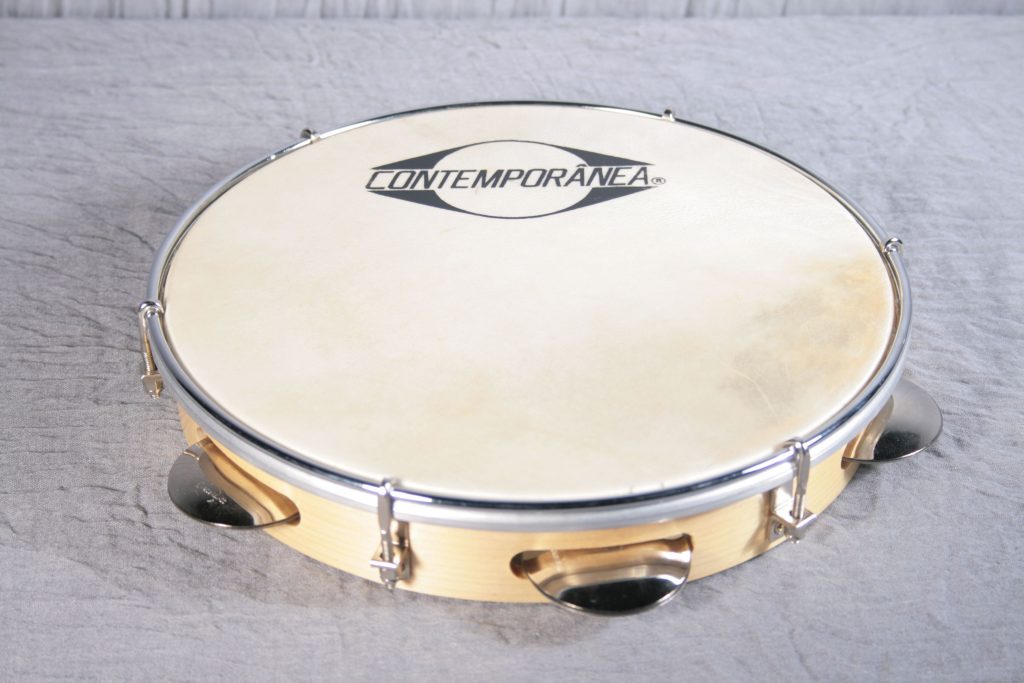
Another way to make a sound out of a pandeiro is by shaking it. You can also run your finger across the head of the Pandeiro to produce a drum-like roll sound.
The Pandeiro is a very compact and versatile instrument from which you can get a plethora of sounds from it. There are several Brazilian music forms that you can use on your Pandeiro, including choro, capoeira, coco, and samba music. In commercial music genres, you can also employ a pandeiro as an auxiliary percussion instrument.
Tambourine Drums
A tambourine is a percussion instrument that comprises a plastic or wooden frame and metal jingles on the tread. The hoop is closed with a membrane frame head on one side while the other remains open.
When playing the tambourine, drummers hold it in one hand and shake it rhythmically to produce sound patterns. You can also produce sound on your tambourine drum by striking the membrane head with your hand or using drum sticks.
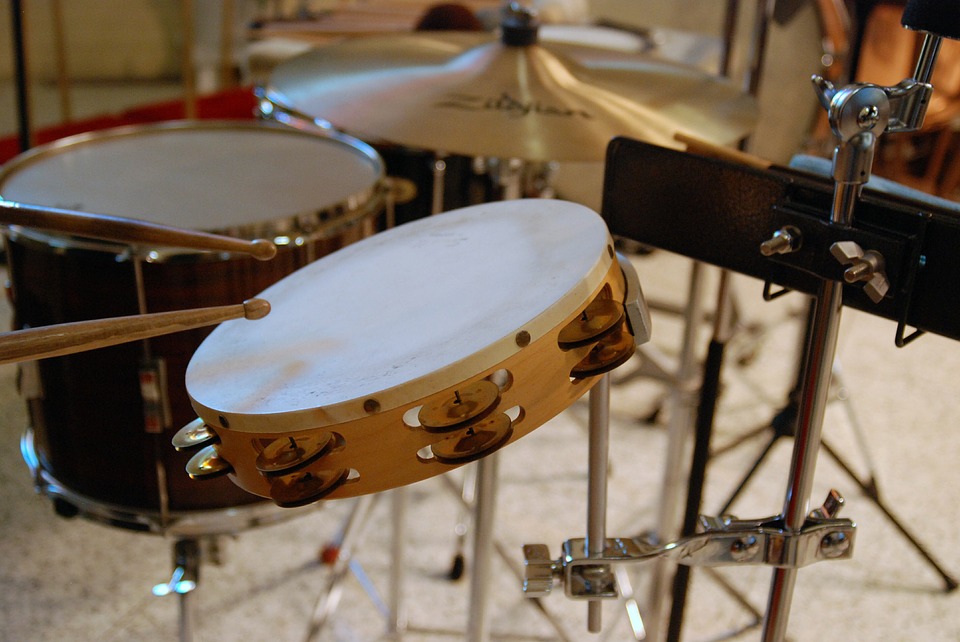
The metal jingles appear in pairs hanging from the wire pins. When you horizontally hold your tambourine, the jingles dampen themselves producing a very short and dry sound. However, if you hold and strike it vertically, the jingles sound weaker but resonate much longer. You can make many sounds based on what part of your hand you play the tambourine with. If you are looking for a percussion instrument that you can sometimes use in orchestral music, the tambourine drum is for you.
Bodhran Drums
Bodhran is an Irish traditional musical instrument deep-rooted with a familiar rich musical heritage. It has been around for thousands of years, with its first appearance in paintings from the early 19th century.
The word Bodhran originated from Gaelic, which translates to ‘skin tray.’ The bodhran drum resembles a drum and a tambourine in terms of design. The circular frame on a traditional bodhran has a skin cover from goatskin or sheepskin.
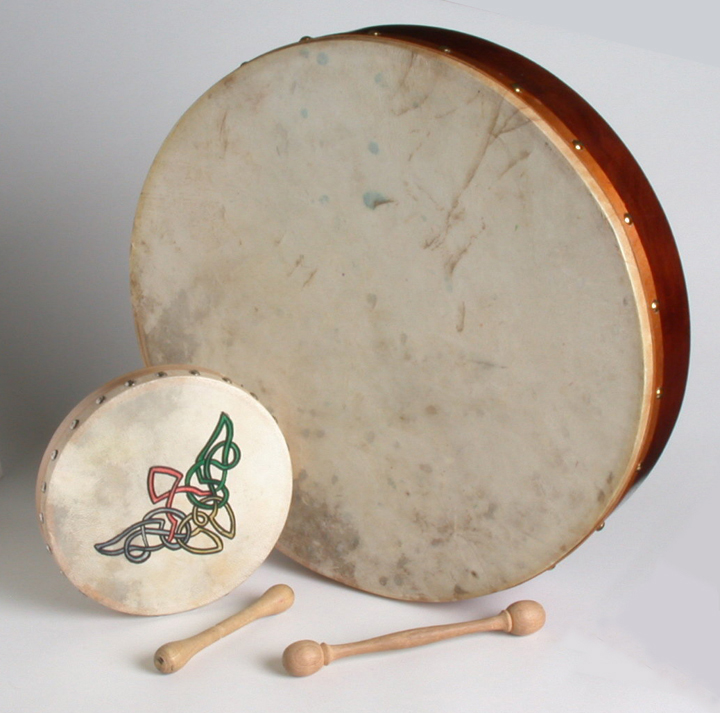
When playing a bodhran drum, you can use a small double-ended drumstick known as a ‘tipper.’ A tipper gives you much freedom and versatility to produce a wide array of musical sounds because it is smaller than other traditional drumsticks.
If you have a strong sense of Irish heritage and culture, you stand a chance to enjoy the nostalgic authenticity of their modern music using the bodhran drums.
Goblet Drums
The goblet drum features a single membranophone head on one end while the other is thin and open. The goblet drum was a National symbol of Egyptian Shaabi Music in ancient times. The drum is also popular in South Asia, North Africa, West Asia, and East Europe.
The general name for goblet drums is Darbuka or Doumbek. Other names include Tarambuke (Balkan), Zarb (Persian), Tabla (Palestinian/Arabic), Tombak (Persian), Dumbelek (Turkish), and Toumbeleki (Greek).
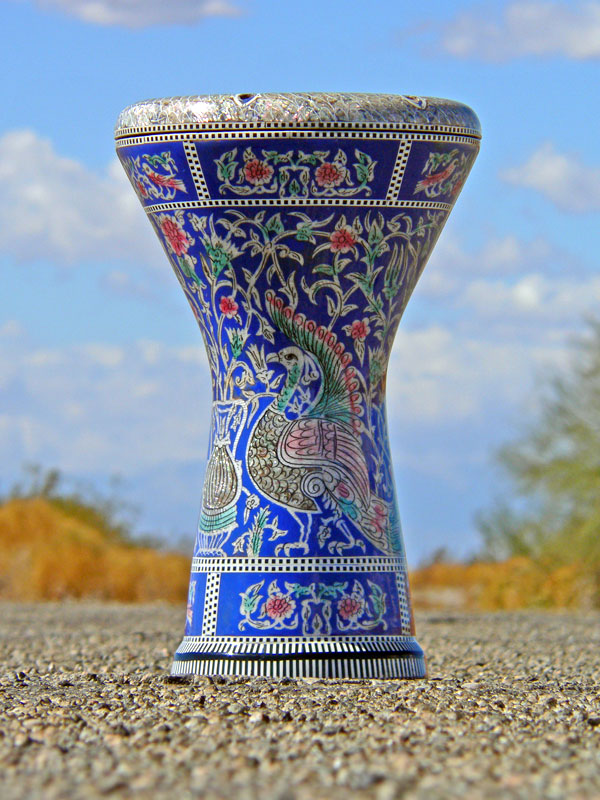
You can play a goblet drum while placing it between your knees or holding it in one arm. Play it with a much lighter touch using your fingertips and palm. To produce a deep bass sound, you need to hit to strike the head near the center with one or more fingertips. Drummers craft these drums using synthetic materials such as FiberSkyn or Mylar to make them lighter than African or Indian drums. However, some drummers use animal skins such as goats or fish.
My Conclusion on Types of Drums
Drumming is a great activity that helps improve your physical fitness, mental health, social skills, and self-confidence. Start with simple exercises like tapping and clapping as you learn to play the drums.
Once you feel comfortable with those basic techniques, you can move to advanced ones like beat matching, rudiments, and polyrhythms. Remember, there are many instructional videos online to help you do this.
Each drum has unique characteristics that help create different kinds of rhythms. For example, the snare drum produces a sharp and high-pitched sound when played fast. On the other hand, the low tom fills out the low frequencies of the rhythm by creating a muffled sound.
It’s not easy to become an expert drummer overnight. Learning how to play requires patience and dedication. You must follow a strict routine that includes regular practice sessions to succeed. This way, you can build your muscle memory and perfect your technique.
